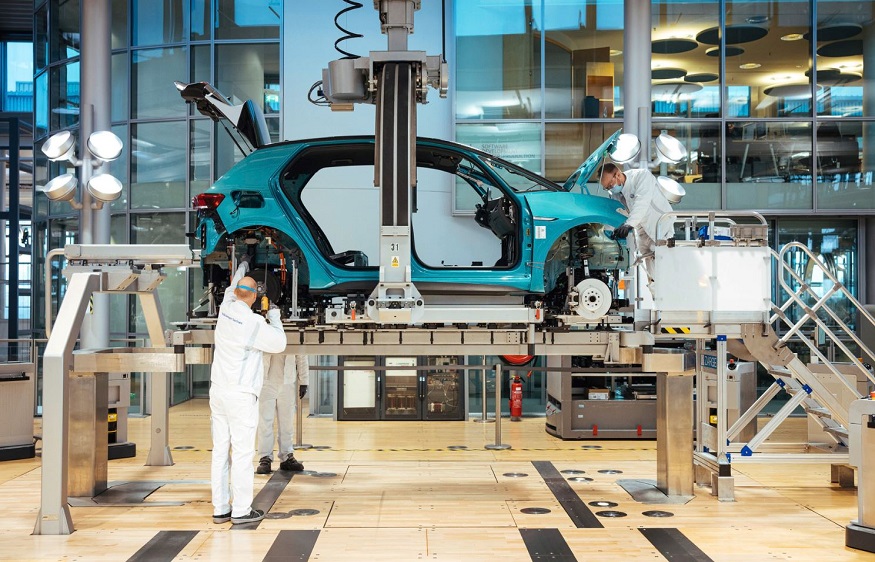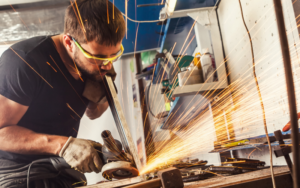Is the battery of an electric car recyclable?
4 min read
The battery is the most precious organ of an electric car, it represents about a third of its price. Depending on the type of technology and the behavior of the user, it can last more than ten years on board the vehicle. But what happens when the car is scrapped? In Europe, manufacturers of electric vehicles are required to recycle their batteries. A constraint set by European directive 2006/66/EC and article R543-130 of the French environment code.
In addition, the French Environment and Energy Management Agency (ADEME) keeps a “national register of batteries and accumulators” on which all operations must be recorded by approved recycling organizations. The majority of used batteries are thus entrusted by manufacturers to specialized companies. To ensure that as many batteries produced will be recycled, they set aside long-term processing volumes.
Even worn out, a battery remains precious
In any case, you should know that an electric car battery retains value even when it is very worn. Indeed, it contains large quantities of precious materials and significant potential for commercial reuse. There is therefore absolutely no point in throwing it away in landfill, in nature or sending it to an obscure processing channel abroad. In addition, a traction battery is quite bulky and weighs between 100 and 600 kg. It is impossible to handle it with bare hands and to transport it without a vehicle and suitable equipment. There is thus considerably less risk that it will end up outside a recycling circuit, unlike a smartphone, laptop or bluetooth speaker battery.
The collection rate for batteries from these mobile devices was only 46.7% in France in 2018. No consolidated data is currently available on the collection rate for batteries from electric cars. They are effectively considered as “industrial accumulators” by the legislation and submerged in this vast category. Moreover, as electric vehicles are recent, very few batteries are discarded today. ADEME thus indicates that the few accumulators treated (2% of the volume of industrial accumulators collected in 2018) “mainly come from damaged or defective vehicles” . The first batteries for hybrid or electric cars”were collected in 2011, following the establishment of a sector in partnership with car manufacturers ” specifies the agency, in its annual report of the register of batteries and accumulators for 2018 .
The stages of recycling
When an electric vehicle in an accident or at the end of its life is scrapped, its battery is removed. On the vast majority of models, it is bolted under the chassis. It is therefore sufficient to place the car on a bridge, disconnect the circuit breaker and unbolt the accumulator, which is received on a trolley. The operation can be carried out by the scrapyard if it has the appropriate equipment and skills, by the car manufacturer, which can send a team to the site in certain cases, or by the approved recycling company. It is then sent to a processing plant.This video of a battery replacement operation provides a better understanding of how a pack is removed from the vehicle.
If it is too damaged, for example following a serious accident, it travels in a specific metal crate, a “sarcophagus” equipped with sensors and an automatic fire extinguishing system. Arrived on site, the battery is opened and tested to determine its level of wear. Depending on its condition, it can be completely dismantled to recycle its components or reconditioned for a “second life”.
The “second life” of a battery
“Second life” involves reusing the battery when it is no longer in good enough condition to propel a vehicle but has enough power and capacity to be used in a stationary storage system. It can thus be used to store renewable energy produced by an individual, a company or an electricity network operator. Most car manufacturers have already carried out “second life” projects with their own batteries.
Extraction and separation of materials
When a battery is too degraded for this use, it is sent to a recycling unit. The law, now quite flexible, obliges recycling companies to recover at least 50% of the weight of a battery. All of them greatly exceed this level and claim between 70 and 90% recycling depending on the battery technology (lithium-ion, NiMh, NiCd, LMP, etc.) Different techniques specific to each company make it possible to extract the different materials that make up an accumulator . The batteries can thus be crushed or heated in a pyrolysis oven in order to separate the elements. A wide range of chemical and mechanical processes then refine them to end up with powders and raw material ingots: lithium, nickel, copper, aluminium, cobalt, cadmium, etc. that can be reused ad infinitum.







